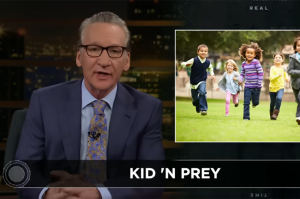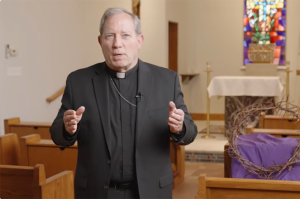The Marriage Meltdown: Gay Unions, Divorce and the Dysfunctional Family
"The week of the decision on Proposition 8 was also the week of the decision on 'The Bachelorette.' Ali Fedotowsky said yes to Roberto Martinez, one out of 25 who competed for the chance...There could be no more perfect metaphor for the state of modern marriage this week. In the U.S., a couple who barely know each other can marry in a publicly validated media spectacle with a sound track, soft lighting, promotional deals and a cash prize, as long as they are a man and a woman. So far, since the show's inception in 2003, Trista Rehn is the only one of the annual contestants to still be married. Yet a couple who quietly have been together for 15 years and married twice, in California, each time it became legal, have had to see their relationship invalidated twice by the courts, by people claiming their marriage was threatening traditional marriage."-Alexander Chee, "You Call This Marriage?"
Despite the political firestorm surrounding the federal court decision that overturned California's Proposition 8 ban on gay marriage, little has been said about the real issues that are contributing to the dysfunctional American family. The disintegration of traditional marriage and the family, once the glue that kept society together, has set in motion a domino effect that, as it ripples outward, is relegating children to lives of poverty and servitude and destroying the foundations of freedom.
Contrary to what critics might say, same-sex marriage, while it may be a symptom of a cultural shift away from traditional marriage and all it has historically entailed, is not responsible for the collapse of marriage as a long-revered institution in this country. That blame rests squarely on the shoulders of heterosexuals for whom marriage-and the family unit that arises from it-has become a temporary arrangement at best, with divorce now seen as an immediate cure-all and cohabitation a happy, less permanent, alternative.
Even among professed evangelical Christians who tout traditional marriage, divorce rates are comparable to those of non-Christians. And while the decline in divorce in recent years has been hailed as good news (it now stands at 40%, down from a high of nearly 60% in the 1980s), it is a false positive that is offset by falling marriage rates and surging cohabitations. As researcher George Barna observes, "There no longer seems to be much of a stigma attached to divorce; it is now seen as an unavoidable rite of passage. Interviews with young adults suggest that they want their initial marriage to last, but are not particularly optimistic about that possibility. There is also evidence that many young people are moving toward embracing the idea of serial marriage, in which a person gets married two or three times, seeking a different partner for each phase of their adult life."
That said, divorce is not solely to blame for the collapse of the institution of marriage. Marriage generally seems to be falling out of favor everywhere except in the realm of reality TV. For the first time in American history, unmarried households now make up the majority of all U.S. households. Younger generations are also more inclined to live together.
Where once the institution of marriage gave legitimacy to sexual relations and children, it no longer serves as much of a gatekeeper. This can largely be attributed to the sexual revolution, which paved the way for sex outside of marriage; the feminist movement, which pushed to legalize abortion, thereby making pregnancy a woman's "problem" to deal with as she sees fit; and the decreased role of religion in American life. Consequently, nearly 40% of all U.S. children are now born out of wedlock. According to the National Center for Health Statistics, the number of unmarried-couple households with children has risen to more than 1.7 million-up from under 200,000 in 1970. Moreover, there are 9.8 million single mothers versus 1.8 million single fathers.
The ramifications of the breakdown of marriage and the subsequent rise in single-parent households are far-reaching and alarming. For example, children living with a single mother are six times more likely to live in poverty than are children whose parents are married. The same study found that children in stepfamilies and single-parent families are almost three times more likely to drop out of school than children in intact families. And living in a single-parent home can cause a disconnect among children between family and marriage. Moreover, as W. Bradford Wilcox, director of the National Marriage Project at the University of Virginia, notes in "The Evolution of Divorce":
Since 1974, about 1 million children per year have seen their parents divorce-and children who are exposed to divorce are two to three times more likely than their peers in intact marriages to suffer from serious social or psychological pathologies. In their book Growing Up with a Single Parent: What Hurts, What Helps, sociologists Sara McLanahan and Gary Sandefur found that 31% of adolescents with divorced parents dropped out of high school, compared to 13% of children from intact families. They also concluded that 33% of adolescent girls whose parents divorced became teen mothers, compared to 11% of girls from continuously married families. And McLanahan and her colleagues have found that 11% of boys who come from divorced families end up spending time in prison before the age of 32, compared to 5% of boys who come from intact homes.... Sociologist Paul Amato estimates that if the United States enjoyed the same level of family stability today as it did in 1960, the nation would have 750,000 fewer children repeating grades, 1.2 million fewer school suspensions, approximately 500,000 fewer acts of teenage delinquency, about 600,000 fewer kids receiving therapy, and approximately 70,000 fewer suicides every year.
These statistics tell some painful truths about America at the dawn of the new millennium. They show that our priorities have clearly shifted. Despite the billions we spend on childcare, toys, clothes, private lessons, etc., a concern for our children no longer seems to be a prime factor in how we live our lives. What are the consequences of all this?
First, the loss of the traditional family structure has led to a destabilization in society of "mediating structures"-neighborhoods, families, churches, schools and voluntary associations. When they function as they should, mediating structures limit the growth of the government. But when these structures break down, society-that is, people-look to mega-structures, such as the state, for help. According to Wilcox, the public costs of family breakdown among working-class and poor communities exceed $112 billion a year "as federal, state, and local governments spend more money on police, prisons, welfare, and court costs, trying to pick up the pieces of broken families."
Second, major religious institutions have virtually little to no moral or spiritual impact on American society-apart from politics, that is. The Christian church is a prime example. Intensely political, many Christian organizations today work feverishly to enact such anti-gay measures as same-sex marriage amendments while doing little to impact the traditional family positively. Indeed, despite all the money ($40 million and counting), politicking, fundraising and energy that conservative Christian groups put into defeating gay marriage in California, nothing was accomplished in terms of shoring up the traditional family structure.
Third, the data supports the premise that the decline in the family leads to a decline in our democratic form of government. Indeed, the family-not schools-is where children should learn self-government, basic moral values and the beliefs that determine the future of democratic institutions. Thus, it stands to reason that without stable families, we can have no hope of producing self-reliant, responsible citizens.
Finally, traditional marriage plays a critical role in the structure of free societies by interposing a significant legal entity between the individual and the state. None other than D. H. Lawrence, author of Lady Chatterley's Lover, once recognized: "The marriage bond is the fundamental connecting link in Christian society. Break it, and you will have to go back to the overwhelming dominance of the State, which existed before the Christian era. The Roman State was all-powerful, the Roman father represented the State, the Roman family was the father's estate, held more or less in fee for the State itself. Now the question is, do we want to go back, or forward, to any of these forms of State control?"
Lawrence continued:
It is marriage, perhaps, which has given man the best of his freedom, given him his little kingdom of his own within the big kingdom of the State, given him his foothold of independence on which to stand and resist an unjust State. Man and wife, a king and queen with one or two subjects, and a few square yards of territory of their own: this, really, is marriage. It is a true freedom because it is a true fulfillment, for man, woman, and children.
There can be no easy fix for these problems. Certainly, there are no legislative or governmental solutions, and fighting gay marriage isn't going to do it. Morality and the decline of the family have become convenient platforms for those on both sides of the political aisle. Having reduced the very real problems plaguing America's families to soundbites bandied about in the quest for political dominance, today's politicians, gay rights activists and traditional marriage activists are not providing a lasting solution to the marriage meltdown.
The solution, if there is one, is to be found where the problems start: with each man, woman and child taking responsibility for keeping their family together. So let's forget about politics. Forget about the debates over who gets to marry whom. Instead, let's look around at what's left of our neighborhoods, our communities and our families, and put our children first.




























